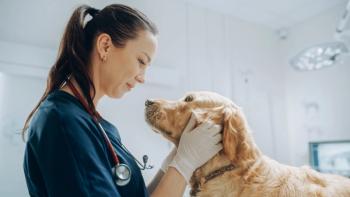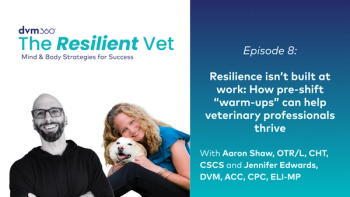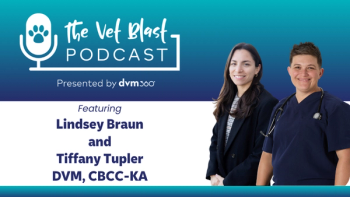
Leading Off: Prepare to re-evaluate your feline vaccination protocols
More than a year in the making, the 2006 American Association of Feline Practitioners (AAFP) Feline Vaccine Advisory Panel Report is scheduled for publication in the Nov. 1 issue of the Journal of the American Veterinary Medical Association.
More than a year in the making, the 2006 American Association of Feline Practitioners (AAFP) Feline Vaccine Advisory Panel Report is scheduled for publication in the Nov. 1 issue of the Journal of the American Veterinary Medical Association. It will also be available on the AAFP (
EVIDENCE AND EXPERTISE
Hailing from universities and private practices in the United States, Canada, and the European Union, the 12 panelists cheerfully donated countless hours, sharing their experience and knowledge of feline infectious disease, internal medicine, immunology, epidemiology, shelter medicine, and clinical practice. The panel relied as much as possible on the growing number of applicable peer-reviewed studies. But when such studies were unavailable, the panel relied on the extensive experience of the panelists and the results of as-yet-unpublished studies. Needless to say, opinions differed on a few issues, such as at what age the kitten series should be concluded (12 weeks or 16 weeks?) and how often felv vaccines should be boosted in adult cats. But after careful consideration of all points of view and existing information, the panel unanimously supported the recommendations contained in the report. Both the aafp Guidelines Committee and the executive board approved the document in midsummer.
WHAT'S NEW?
So what can veterinarians expect? New are sections on vaccination in shelters, vaccination of cats in trap-neuter-return programs and of kittens in socialization classes, and vaccine administration. But much will be familiar. Vaccines are again classified as core, noncore, or not generally recommended. There are updated sections on the types of vaccines and routes of administration, immune responses to vaccination (including information on duration of immunity), laboratory tests to assess immunity, legal and regulatory considerations, and adverse events and reporting. Administering injectable vaccines in specific sites continues to be advised, with a re-emphasis on injection as distally as possible (sarcomas arising in the proximal limb are much more difficult to manage).
Of major interest is the section on the infectious diseases for which vaccines exist. Included are descriptions of each of the 10 agents, how they're transmitted and diagnosed, and which cats are most at risk of infection and disease. Also included are discussions of the types of vaccines available and what they're expected to accomplish, along with any recognized adverse events associated with vaccination. Panel recommendations for vaccine use are given for each infectious agent, with the most important material summarized in table form for easy access.
Changes are taking place rapidly in feline vaccinology. Vaccine manufacturers have quickly responded to many of the recommendations and concerns expressed in previous reports, including
- Licensing of multivalent feline panleukopenia, feline herpesvirus, and feline calicivirus vaccines with demonstrated duration of immunity of at least three years
- Funding of studies investigating the duration of vaccinal immunity in the real world, not just in the laboratory
- Creation of appropriate monovalent products
- Creation of multivalent formulations based on similar vaccine target populations (that is, cats with similar exposure and infection risk) and similar duration of immunity
- Development of vaccines that create less inflammation at injectable vaccination sites
- Production of vaccines with smaller doses
- Development of novel methods of vaccine administration.
A LIVING DOCUMENT
Because of the changes taking place, the aafp Feline Vaccine Advisory Panel Report should be viewed as a living document subject to modification as new vaccines and new information come forth. The aafp remains committed to helping veterinarians provide the best care possible to their patients and clients and is proud to present this report to the profession.?
The members of the panel received no compensation for this work, nor were their efforts sponsored or funded by any manufacturer.
James R. Richards, DVM
James R. Richards, DVM, is director of the Cornell Feline Health Center, Cornell University College of Veterinary Medicine. He chaired the 2006 AAFP Feline Vaccine Advisory Panel and served on the 1998 and 2000 vaccine advisory panels.
Newsletter
From exam room tips to practice management insights, get trusted veterinary news delivered straight to your inbox—subscribe to dvm360.




